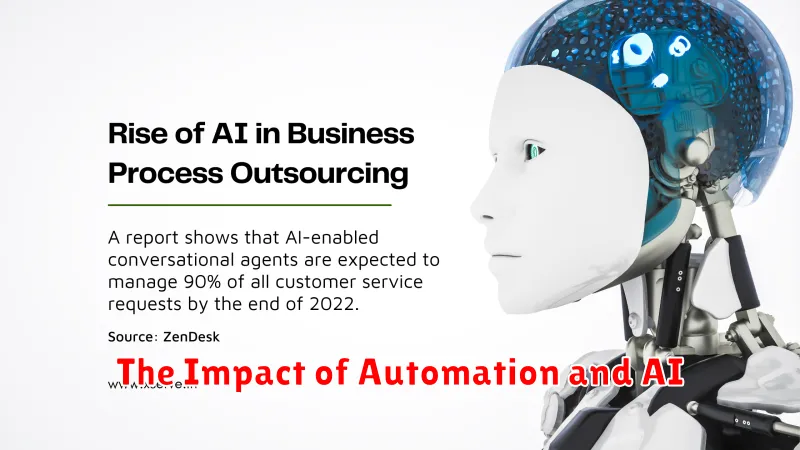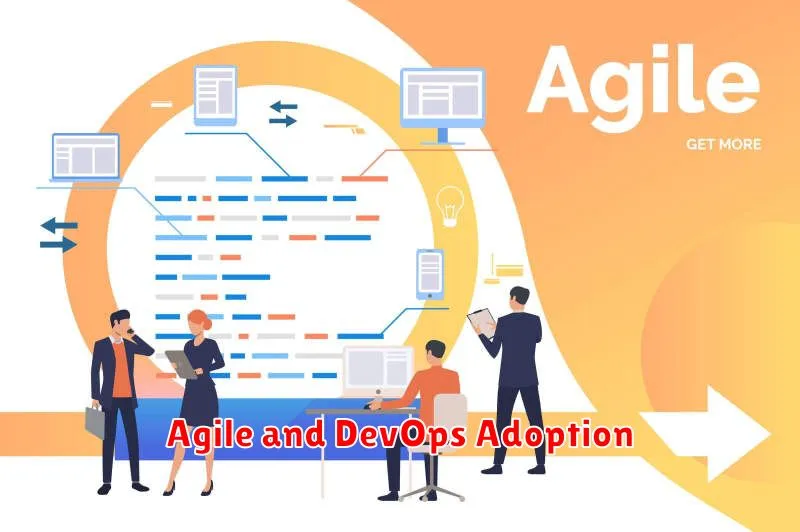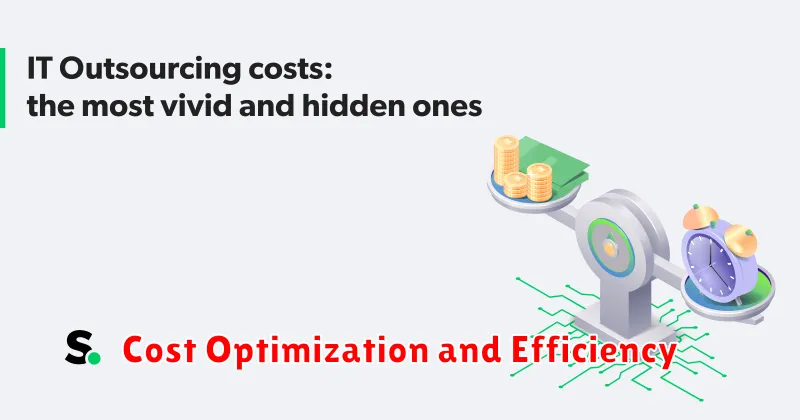In the ever-evolving tech landscape, businesses are constantly seeking strategic partnerships to drive innovation, improve efficiency, and gain a competitive edge. As we enter 2024, the landscape of IT outsourcing is experiencing a significant shift, with emerging trends shaping the future of tech partnerships. This article will delve into the top IT outsourcing trends that businesses need to be aware of, providing insights into the key drivers, benefits, and considerations for navigating this dynamic space.
From the rise of cloud-native development and the growing adoption of AI and automation to the increasing demand for cybersecurity expertise and flexible engagement models, the IT outsourcing industry is undergoing a transformation. Understanding these trends is crucial for businesses looking to leverage the power of external partnerships to achieve their digital goals. By staying ahead of the curve, organizations can identify the right outsourcing solutions to unlock their full potential and thrive in the digital age.
The Evolving Landscape of IT Outsourcing

The IT outsourcing landscape is constantly evolving, driven by technological advancements, changing business needs, and a globalized workforce. In 2024, several key trends are shaping the future of tech partnerships, influencing how businesses leverage external expertise.
One of the most prominent trends is the rise of cloud-native outsourcing. As businesses embrace cloud computing, they are increasingly seeking partners with expertise in cloud-based solutions. This includes everything from infrastructure management to software development and data analytics. This trend allows businesses to benefit from the scalability and agility of cloud technologies without having to build and maintain their own infrastructure.
Another significant trend is the growing demand for specialized IT services. Businesses are now seeking partners with deep expertise in specific areas, such as cybersecurity, artificial intelligence (AI), and blockchain. This move away from general IT outsourcing allows businesses to tap into the specialized knowledge needed to stay ahead of the curve in these rapidly evolving fields.
Furthermore, the rise of remote work and distributed teams is transforming IT outsourcing. Companies are now able to collaborate with talent from around the globe, opening up a vast pool of skilled professionals. This trend is driven by the need to access specialized skills, reduce costs, and improve flexibility.
The IT outsourcing landscape in 2024 is also characterized by a growing emphasis on strategic partnerships. Businesses are seeking partners who can act as extensions of their own teams, offering not only technical expertise but also strategic guidance and innovation. This trend is driven by the need to achieve a seamless integration of IT services with business goals.
In conclusion, the IT outsourcing landscape is evolving rapidly, driven by technological advancements, changing business needs, and a globalized workforce. By understanding these trends, businesses can navigate the future of tech partnerships and leverage external expertise to achieve their goals.
Key IT Outsourcing Trends to Watch in 2024

The IT outsourcing landscape is constantly evolving, driven by technological advancements, evolving business needs, and a globalized talent pool. As we step into 2024, certain key trends are poised to shape the future of tech partnerships. Here are some of the most critical areas to watch:
1. Rise of Hyperautomation
Hyperautomation is not just about automating individual tasks but about creating a fully automated end-to-end process. This trend is driven by the increasing availability of AI-powered tools and the growing need for efficiency and scalability. Expect to see a surge in demand for outsourcing providers capable of implementing complex, intelligent automation solutions.
2. Cloud-Native Outsourcing
The cloud has fundamentally changed how businesses operate, and outsourcing is no exception. Cloud-native outsourcing, where services are delivered entirely on cloud platforms, is becoming the norm. This approach offers greater flexibility, scalability, and cost-effectiveness compared to traditional on-premise solutions.
3. The Power of Nearshoring and Regionalization
While offshoring has been a mainstay in outsourcing, nearshoring and regionalization are gaining traction. This shift is driven by factors like reduced communication barriers, cultural alignment, and easier collaboration. Expect to see more companies seeking IT partners within their own region or in nearby countries.
4. Emphasis on Cybersecurity and Data Privacy
Data security and privacy are paramount in today’s digital world. Outsourcing partners must demonstrate robust cybersecurity measures and data protection capabilities. This includes compliance with international regulations like GDPR and CCPA, as well as proactive threat detection and response.
5. Skill-Based Outsourcing
The demand for specialized skills is high, and businesses are looking to access talent pools they might not have internally. Skill-based outsourcing allows companies to tap into niche expertise for specific projects or ongoing needs. This could involve working with specialized firms or individual experts on a project basis.
Navigating the Future
As IT outsourcing continues to evolve, businesses must be strategic in their approach. Understanding these trends and their implications is crucial for building successful tech partnerships. By embracing innovation, focusing on value, and fostering collaboration, companies can leverage outsourcing to gain a competitive advantage and drive digital transformation.
Focus on Strategic Partnerships

In the dynamic landscape of tech, strategic partnerships are no longer optional; they’re a necessity. As organizations seek to navigate the complexities of digital transformation and rapidly evolving technologies, collaborating with the right partners is crucial for success. The top IT outsourcing trends of 2024 highlight a shift toward deeper, more strategic partnerships.
Focus on Business Outcomes: Gone are the days of simple vendor-client relationships. Today, the emphasis is on collaborative partnerships that align with specific business goals. Companies are looking for partners who understand their unique needs and can contribute to achieving measurable results.
Long-Term Engagement: The fleeting nature of short-term contracts is giving way to long-term partnerships. This allows for a deeper understanding of each other’s capabilities and fosters a more collaborative, trust-based relationship. Long-term partnerships enable companies to build shared roadmaps, streamline processes, and achieve greater long-term value.
Innovation as a Shared Goal: Successful partnerships are now driven by a shared commitment to innovation. Companies are seeking partners who bring fresh perspectives, cutting-edge technologies, and a willingness to explore new possibilities together. This collaborative approach to innovation fuels growth and competitive advantage.
Beyond Technology Expertise: Partnerships are expanding beyond simply acquiring technical expertise. Companies are now looking for partners who possess strong domain expertise and can offer valuable insights across various business areas. This holistic approach ensures a more comprehensive understanding of the business context and allows for more effective solutions.
The focus on strategic partnerships in IT outsourcing reflects a fundamental shift in how companies are approaching technology. It’s about building strong, collaborative relationships that go beyond transactional interactions. By focusing on shared goals, long-term engagement, and continuous innovation, companies can unlock the true potential of strategic partnerships and drive success in the ever-evolving tech landscape.
Rise of Cloud-Based Solutions

In 2024, the tech landscape is increasingly driven by the adoption of cloud-based solutions. Businesses are realizing the immense benefits of leveraging the cloud for their IT needs, resulting in a significant shift towards outsourcing.
The rise of cloud-based solutions is fueled by several factors:
- Cost-effectiveness: Cloud solutions eliminate the need for expensive hardware and infrastructure, leading to significant cost savings.
- Scalability: Cloud services are highly scalable, allowing businesses to adapt their IT resources to changing needs.
- Flexibility: Cloud solutions offer unparalleled flexibility, enabling businesses to access and manage their data and applications from anywhere, anytime.
- Security: Reputable cloud providers offer robust security measures, ensuring the safety of sensitive data.
As a result, cloud-based solutions are becoming integral for various aspects of IT outsourcing, including:
- Software-as-a-Service (SaaS): Businesses are increasingly relying on cloud-based software solutions for various functions like CRM, ERP, and productivity.
- Infrastructure-as-a-Service (IaaS): Cloud providers offer virtualized servers, storage, and networking resources, allowing businesses to build and manage their infrastructure remotely.
- Platform-as-a-Service (PaaS): Cloud platforms provide a complete development and deployment environment, simplifying application development and deployment.
The rise of cloud-based solutions presents a significant opportunity for businesses looking to optimize their IT operations and gain a competitive edge. By embracing cloud adoption, organizations can unlock a range of benefits, including increased efficiency, cost savings, and enhanced agility.
Demand for Specialized Skills

As technology rapidly evolves, so too does the demand for specialized skills in the IT outsourcing landscape. 2024 sees a surge in the need for professionals adept in cloud computing, artificial intelligence (AI), cybersecurity, and data analytics. Businesses are increasingly seeking partners who can navigate these complex domains and deliver solutions tailored to their unique needs.
The rise of cloud-native applications, the proliferation of data, and the growing threat of cyberattacks have driven the demand for specialists in these areas. Companies need experts who can design, implement, and manage cloud infrastructure, build and deploy AI models, strengthen cybersecurity defenses, and extract valuable insights from data. This shift necessitates a strategic focus on acquiring and developing specialized talent within outsourcing partnerships.
The demand for specialized skills isn’t limited to technical expertise. Soft skills like communication, problem-solving, and collaboration are equally crucial. Outsourcing partners need individuals who can effectively communicate technical concepts to clients, collaborate seamlessly within diverse teams, and adapt to rapidly changing environments. These skills ensure smooth project execution, successful knowledge transfer, and long-term partnership success.
In navigating the future of tech partnerships, businesses must prioritize outsourcing partners who possess a strong understanding of these specialized skills. This includes assessing their technical expertise, experience in relevant technologies, and commitment to talent development. By aligning with partners who can deliver on the evolving demands of the tech landscape, organizations can unlock innovation, drive efficiency, and secure their competitive edge.
Data Security and Privacy Concerns

In the era of rapid technological advancements, IT outsourcing has become increasingly prevalent. While it offers numerous benefits, such as cost optimization and access to specialized expertise, it also raises significant data security and privacy concerns. As organizations entrust their sensitive information to third-party providers, ensuring the protection of their data becomes paramount.
One of the primary concerns is the risk of data breaches. Outsourcing partners may not have the same level of security measures as the organization itself, leaving data vulnerable to unauthorized access. It’s crucial to conduct thorough due diligence and select providers with robust security protocols and compliance certifications.
Another crucial aspect is data privacy compliance. Organizations must ensure that their outsourcing partners adhere to relevant data privacy regulations, such as the General Data Protection Regulation (GDPR) and the California Consumer Privacy Act (CCPA). Contracts should clearly define data ownership, access rights, and data transfer policies to protect sensitive information.
Furthermore, data sovereignty presents a challenge in the context of IT outsourcing. Organizations need to be mindful of where their data is stored and processed, ensuring compliance with local laws and regulations. Selecting partners with data centers in geographically appropriate locations can mitigate these risks.
Addressing data security and privacy concerns is essential for successful IT outsourcing partnerships. By carefully vetting providers, establishing clear contracts, and implementing robust security measures, organizations can navigate the future of tech partnerships while safeguarding their valuable data assets.
The Impact of Automation and AI

The rapid advancement of automation and artificial intelligence (AI) is dramatically reshaping the IT outsourcing landscape in 2024. This technological revolution is driving a shift towards greater efficiency, cost optimization, and enhanced capabilities within IT partnerships.
Automation is streamlining repetitive tasks, freeing up human resources to focus on higher-value activities. This includes automating routine processes such as data entry, software deployment, and infrastructure management.
AI, meanwhile, is empowering businesses with intelligent solutions that enhance decision-making, predict outcomes, and optimize operations. AI-powered tools are being utilized for tasks like cybersecurity threat detection, customer service automation, and predictive maintenance.
The impact of automation and AI extends beyond increased efficiency. It’s also fostering a paradigm shift in the nature of IT partnerships.
Agile and DevOps Adoption

In 2024, the IT outsourcing landscape is undergoing a significant shift, fueled by the increasing demand for agility and faster time-to-market. This is driving a rapid adoption of Agile and DevOps methodologies among outsourcing partners. By embracing these practices, organizations can streamline their development processes, enhance collaboration, and deliver value to customers more efficiently.
Agile methodologies promote iterative development and continuous feedback, enabling businesses to adapt to changing market demands quickly. This approach fosters close collaboration between development teams and clients, resulting in solutions tailored to specific needs. On the other hand, DevOps emphasizes automation and integration, breaking down silos between development and operations teams to accelerate deployment and improve reliability.
The adoption of Agile and DevOps is not just a trend; it’s a necessity. Outsourcing partners who fail to embrace these methodologies risk falling behind in a competitive market. Companies are looking for partners who can deliver innovative solutions at speed, and Agile and DevOps provide the tools and processes to achieve this.
Cost Optimization and Efficiency

In today’s competitive landscape, businesses are constantly seeking ways to reduce costs and enhance efficiency. IT outsourcing has emerged as a powerful tool for achieving these goals, and 2024 is poised to witness significant advancements in this space. Cost optimization is a key driver for IT outsourcing, as businesses can access specialized talent and resources at a fraction of the cost of building and maintaining an in-house team. By leveraging cloud computing, automation, and other emerging technologies, outsourcing providers can deliver cost-effective solutions that streamline operations and improve ROI.
Efficiency improvements are another major benefit of IT outsourcing. Outsourced partners bring expertise and best practices, enabling businesses to optimize their processes, reduce redundancy, and enhance productivity. They can also help organizations adopt agile methodologies and implement lean management principles, leading to faster development cycles, improved quality, and increased agility in responding to market changes.
As businesses increasingly embrace digital transformation, the demand for specialized skills and resources is growing. IT outsourcing allows organizations to access a global pool of talent, expanding their capabilities and providing access to niche expertise that may be difficult to find internally. This opens up opportunities for businesses to innovate and develop cutting-edge solutions without the burden of hiring and training in-house staff.
Emphasis on Business Outcomes

In the dynamic landscape of technology, strategic partnerships are no longer optional—they’re essential for businesses seeking to thrive. As we navigate the uncharted waters of 2024, the focus shifts from mere outsourcing to a more profound collaboration: a partnership driven by shared goals and a commitment to tangible business outcomes. This paradigm shift underscores the need to move beyond transactional relationships and cultivate strategic alliances that align with organizational objectives.
Instead of simply delegating tasks, forward-thinking businesses are seeking partners who can bring unique expertise, innovative solutions, and a deep understanding of their industry. This translates into a focus on measurable outcomes like increased efficiency, reduced costs, improved customer satisfaction, and accelerated time-to-market. The emphasis is on achieving concrete results that drive business growth and competitive advantage.
Beyond the technical capabilities, successful partnerships in 2024 will be built on transparency, communication, and shared responsibility. A clear understanding of roles and responsibilities, coupled with regular communication and feedback loops, fosters trust and ensures that both parties are working towards the same goals. This collaborative approach allows for agility and adaptability, enabling businesses to navigate the ever-evolving technological landscape with confidence.
Ultimately, the true measure of success in tech partnerships in 2024 lies in the impact they have on business outcomes. By focusing on delivering tangible value, fostering innovation, and driving growth, these partnerships become strategic assets that propel businesses forward in the digital era.

